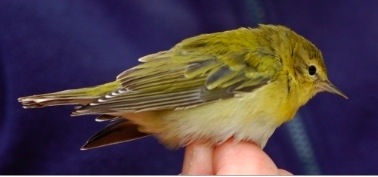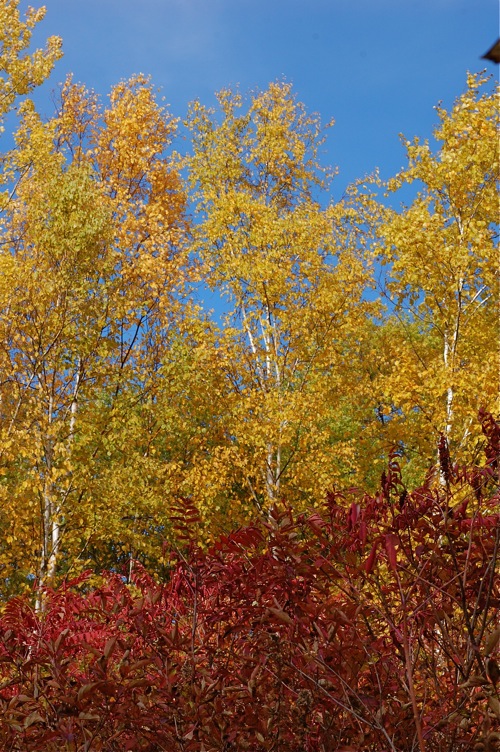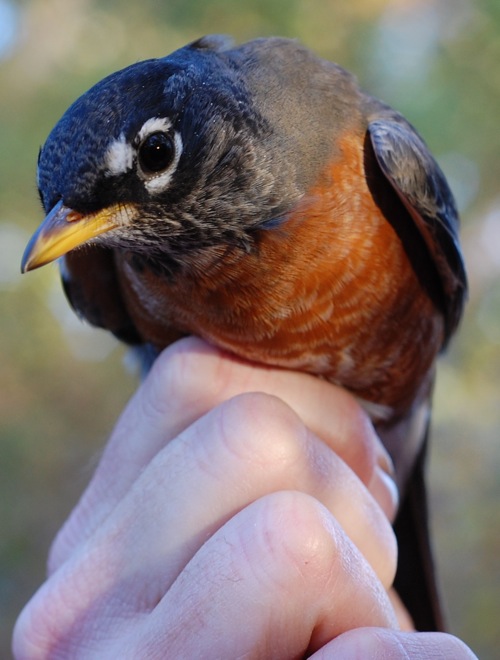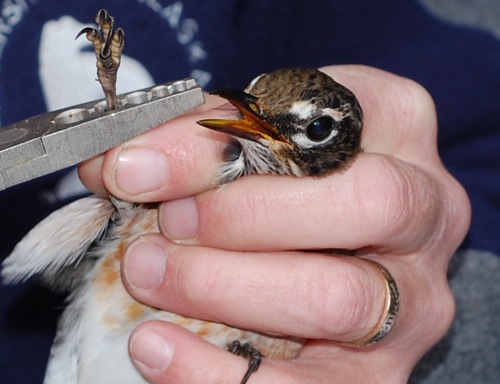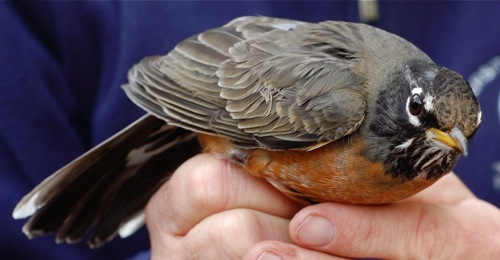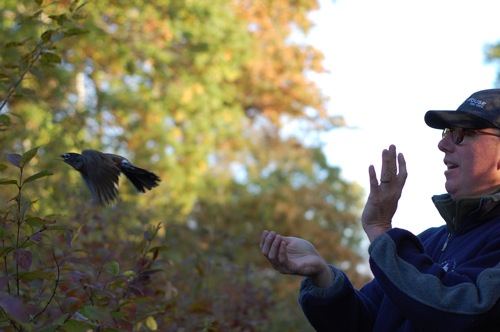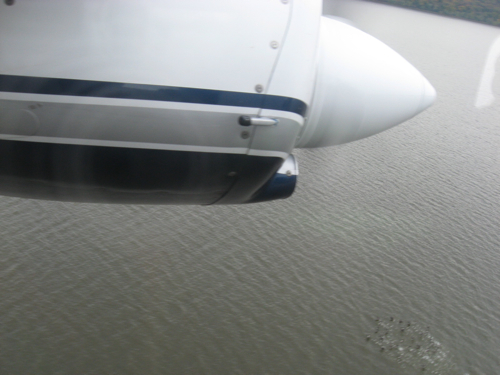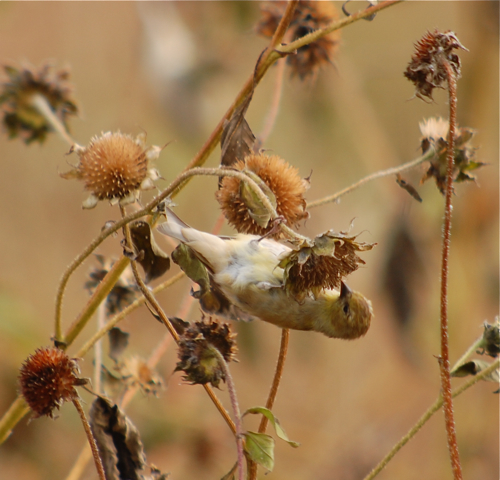We did another aerial survey of the Upper Mississippi yesterday. It was beautiful morning to fly over the river. We still are not seeing huge amounts of ducks and our pilot who is flying surveys all over the places said that Pool 9 to the south of us is just packed with ducks and even a few tundra swans already. I'm hopeful that as it gets later we'll see more waterfowl, but this all part of a long term study--how and why is this area being used by waterfowl and if it's not being used...what could be the reason?

We passed quite a few duck hunters and again, we were so low that the hunters waved at us and we gave them a friendly wave back. One area was so full of duck hunters, I had to be very careful that I was not counting decoys. Our pilot mentioned today that it's very difficult to train people to aerial surveys--especially birders. He said that they lose most who try for two reasons: 1. Motion sickness (which as long as I don't drink too much alcohol the night before and have some snack crackers to eat if I feel a slight tinge of nausea, I'm good). 2. Most birders can't handle the speciation and counting at the same time from this angle and going that fast. I told the pilot that this reminded me a lot of shorebird id--using movement, shape, comparative size, and not using color too much to id birds. This is very much birding by "GISS Birding" (general impression of size and shape) or "Jizz Birding" as birders have a tendency to use the unfortunate slang spelling.

There are still many American white pelicans around. I love this shot of some loafing pelicans spreading out onto the water as we fly over. There were a few in the air and it's fun to watch the pelicans and the eagles soaring at eye level...so long as they are a good distance away. And again, the pilot had to veer to stay out of a soaring eagle's way--they don't move.
Ring-billed gulls on the other hand fly all over and all around our plane, easily dodging as we go by. Gulls are hands down the dominant species we are seeing on the survey, but we're not counting those. I get a kick out of identifying other bird species as we go over like the large flocks of red-winged blackbird (SO fun to look down and see hundreds below and their red should patches flashing--what a cool view), cedar waxwings, robins, and flickers--lots and lots of flickers.

We're still seeing good numbers of coots, this was a raft out on Lake Pepin. I was very excited that we did see a few of our first divers--common mergansers finally. Their numbers should be huge in November. I've seen thousands in and around Pepin in late fall and have always wondered what it would be like to be over the river where they are. We also flew over some ducks that I was going to call mergs and the pilot called goldeneye. He saw the white patch on the face and I did not. I thought it would be more obvious to see the goldeneye white patch from overhead, but you're going so fast and your eye is drawn to their backs, I'm going to have to make a conscious effort to look at the heads.

Towards the end of the survey, we could see the coming rain. I was glad we were able to get our counts in before the weather got nasty. It was cool to see the sun trying to creep though the gathering clouds over Lake Pepin.
The rain hadn't quite hit when we were finished with the surveys, so I stopped at Black Dog Lake before going home to see if I could see some sparrows and to also just enjoy birds in the way that I'm used to--on the ground.

As usual, bald eagles were all over the places, including this young bird--so dark it looks like it was hatched this summer. When they are young like this, they look like disaffected youth who don't know what to do with their bodies yet...with really big noses. That beak almost looks too big for his face. Why does it look more streamlined when the head turns white and the beak turns yellow?
There were quite a few sparrows, but only this song sparrow was brave enough to pop up from the grasses. What could have been the reason to lay low?
A shrike. I had to think a minute because loggerhead shrikes nest in Minnesota in summer and then migrate out. Northern shrikes come to Minnesota in winter...I had to take a look and remember which one has the thinner mask and thicker bill--it's a northern shrike. This is a fairly reliable spot in the Twin Cities for a shrike in winter.
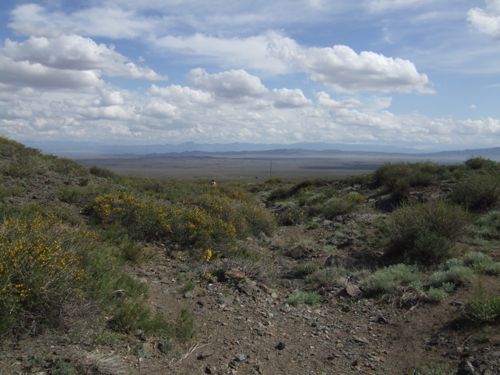 Tonight is my program at REI in Blooming on Birding in Kazakhstan for the MN River Valley Audubon Chapter and it's free. This is an excellent group to meet up with if you are new to the Twin Cities birding scene. It's a fun an eager group of birders. You don't have to be a member to attend tonight's event. Some of what I'll be showing has not been in the blog yet, so you'll get to see some new stuff!
Tonight is my program at REI in Blooming on Birding in Kazakhstan for the MN River Valley Audubon Chapter and it's free. This is an excellent group to meet up with if you are new to the Twin Cities birding scene. It's a fun an eager group of birders. You don't have to be a member to attend tonight's event. Some of what I'll be showing has not been in the blog yet, so you'll get to see some new stuff!










